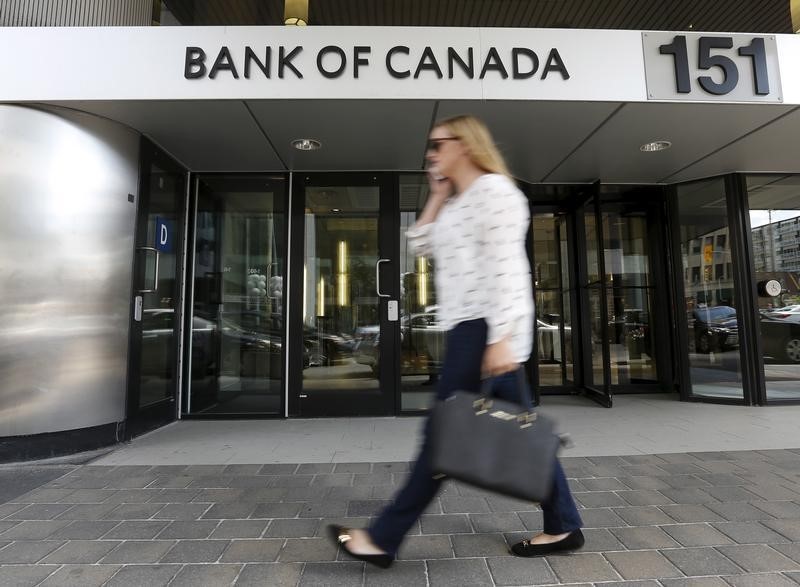By Leah Schnurr
OTTAWA, Nov 30 (Reuters) - Canada's economy accelerated in the third quarter at its fastest pace in more than two years as it benefited from a rebound in oil exports, cementing expectations the central bank will keep interest rates steady next week.
Gross domestic product (GDP) grew at an annualized 3.5 percent, Statistics Canada said on Wednesday, slightly exceeding economists' expectations of 3.4 percent and picking up from a contraction of 1.3 percent in the second quarter.
Last quarter brought the strongest pace of expansion since the second quarter of 2014 and topped the Bank of Canada's forecast for 3.2 percent growth. The economy has struggled to regain sustained momentum since it fell into a brief recession early last year when it was hit by a drop in oil prices.
"It's certainly a nice relief to see Canadian GDP numbers that are much stronger than expected in almost every major facet," said Doug Porter, chief economist at BMO Capital Markets.
Economists were also encouraged by September's stronger-than-expected 0.3 percent growth, which suggested the fourth quarter could slow less than anticipated and potentially give the bank room to remain on hold.
"It certainly reduces the probability for them to have to introduce a further ease," said Paul Ferley, assistant chief economist at Royal Bank of Canada. "There appears to be sufficient momentum in the economy."
The Canadian dollar strengthened against the greenback following the data. CAD/
Policymakers meet next week. The bank cut rates twice in 2015 to combat the oil price shock and acknowledged at its last meeting in October it had considered cutting again. BOCWATCH
Growth in exports bolstered the economy in the third quarter as energy products recovered from second-quarter weakness that resulted from wildfires in northern Alberta.
Exports of services and consumer goods gained, while increases in household consumption and inventories also boosted broader growth.
Despite the continued consumption, the household savings rate jumped. With wages growing at the same pace as in the second quarter, it suggesting families were holding on to at least some of the new child benefit checks the government began mailing out in July.
The long support the economy has received from housing faltered as business investment in residential structures contracted. A decline in ownership transfer costs weighed after a Vancouver tax on home purchases by overseas buyers took effect in August.
Separate data showed producer prices rose slightly more than expected in October on higher costs for energy and petroleum products. Graphic - Canada producer prices
http://link.reuters.com/cuj92t Graphic - Canada economic snapshot
http://tmsnrt.rs/2e8hNWV
^^^^^^^^^^^^^^^^^^^^^^^^^^^^^^^^^^^^^^^^^^^^^^^^^^^^^^^^^^^>
